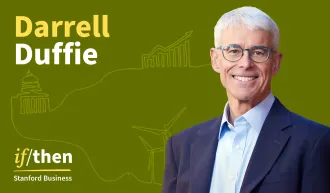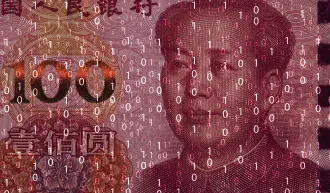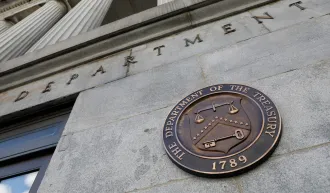The Hidden Costs of Clicking the “Buy Now, Pay Later” Button
The market for instant online credit has exploded. But it comes with big downsides for some borrowers.
February 02, 2024

Buy Now, Pay Later plans have become a hit with younger adults who don’t have established credit. | Alvaro Dominguez
In the past couple of years, a new payment option has become almost ubiquitous on online retailers’ checkout screens: Buy Now, Pay Later.
This fintech innovation offers consumers instant financing for large and small purchases on a transactional basis. In a typical purchase, a shopper might pay 25% down for that new sofa or this week’s groceries and pay off the remaining 75% in three equal installments — one every two weeks. If they make the payments on time via a bank account or credit card, the loan is interest-free.
Over the past decade, fintech companies such as Klarna, Affirm, and Afterpay have taken Buy Now, Pay Later from a niche alternative to a mainstream choice by signing up tens of thousands of retailers. The retailers offer BNPL as a payment option at the point of sale and pay a small merchant fee, as with credit cards.
Unlike plastic, however, BNPL does not require a rigorous credit check. That’s made it a hit with consumers, especially younger adults without well-established credit. Total loan volume among the largest BNPL providers grew from $8.3 billion in 2020 to $24.2 billion in 2021, according to the Consumer Financial Protection Bureau. During the 2023 holiday season alone, shoppers availed themselves of $16.6 billion in BNPL loans. Estimates for near-term growth range widely, though it’s been estimated that global loan volume could reach $1 trillion by 2025.
“BNPL is a pretty slick innovation. It is convenient and it’s basically free credit if you pay it off on time,” says Ed deHaan, a professor of accounting at Stanford Graduate School of Business.
However, it also has the potential for misuse and abuse. If BNPL borrowers do not make the payments on time, they can incur late charges, overdraft fees, and interest payments. If they overuse BNPL, they may postpone other payments, incurring higher interest on credit cards and other kinds of loans.
DeHaan wondered how pervasive those negative outcomes might be. “The financial savviness of the average user is not great,” he says. “And we have plenty of evidence from history that, left to their own devices, the companies that issue credit tend to do so at consumers’ expense when they can. So we should be wary of new innovation in the credit space.”
As this new financial product grew, deHaan joined Jungbae Kim of Singapore Management University and Ben Lourie and Chenqi Zhu of the University of California, Irvine, to investigate its effects. In one of the first studies of BNPL’s effects on its users’ financial health, they analyzed the bank and credit card transactions of 10.6 million U.S. consumers between 2015 and 2021. They found that 13% had used BNPL. By 2021, the average borrower was paying $500 quarterly on a dozen BNPL installment payments.
Fast, Easy, and Unregulated
“We examined the changes in the BNPL users’ financial health before and after adoption, and compared them to similar non-BNPL users,” deHaan explains. An analysis of more than 570,000 pairs of BNPL users and non-users revealed that users incurred 4% more overdraft charges, 1.1% higher credit card interest, and 2.3% more credit card late charges than their counterparts.
The researchers then teased out those consumers who were frequent shoppers at retailers that partnered with BNPL providers. They found that being offered BNPL by a favorite retailer powerfully predicts a shopper’s willingness to use it and that these users had an 8.9% increase in overdraft charges, a 2.5% increase in credit card interest, and an 8.4% increase in late fees. This adds up to $176 per year in extra charges for the average user and up to $252 per year for especially vulnerable users.
“The average effect of using BNPL is negative, which is surprising,” deHaan says. “It’s a relatively small negative number, but likely meaningful for many people who live paycheck-to-paycheck. We’re not saying that this is all doom and gloom. We’re just saying that, like every other consumer credit product, BNPL warrants careful academic and regulatory attention and most likely also warrants regulation.”
BNPL is an opaque sector of the credit markets. These loans are not reported to credit bureaus and are largely unregulated. Currently, BNPL providers are promoting self-regulation via a voluntary code of conduct. In October 2023, the EU revised its Consumer Credit Directive to regulate some kinds of BNPL, but the U.S. is lagging.
“The Consumer Financial Protection Board seemed very eager to do something about it at first, but we haven’t seen much movement,” says deHaan. “I’m surprised that regulation is taking as long as it has. But it surely must be on regulators’ agendas.”
What should be happening in the BNPL sector? “First and foremost, BNPL providers should be reporting to the credit bureaus,” deHaan says. “As much as we all hate to deal with the credit bureaus, they provide transparency so that different lenders can observe how much credit is being extended to consumers. That prevents debt stacking, which is when people open several accounts at the same time and end up in trouble. Not reporting BNPL loans also doesn’t allow consumers to build up their credit scores — they aren’t getting credit for their credit.”
BNPL providers should also be responsible for providing standard consumer protections, deHaan says. “Fraud protection is no brainer. And there should be a regulated dispute resolution process. There are processes that credit card companies and banks need to follow that BNPL providers do not. There should also be standard disclosures that spell out users’ obligations as plainly as one can.”
“BNPL is here to stay,” deHaan adds. “I think it’s going to be a regular tool in everybody’s digital wallet, and the types of people who are adopting it now at age 22 will very likely continue using it into their thirties, and this will be a very different conversation. But right now, a little bit more of an intentional regulatory approach will meaningfully improve the welfare of BNPL users.”
For media inquiries, visit the Newsroom.
Explore More

The Promise and Pitfalls of Investing for Change

The Fast and the Incurious: How High-Speed Stock Trading Pushes Out Smart Money



